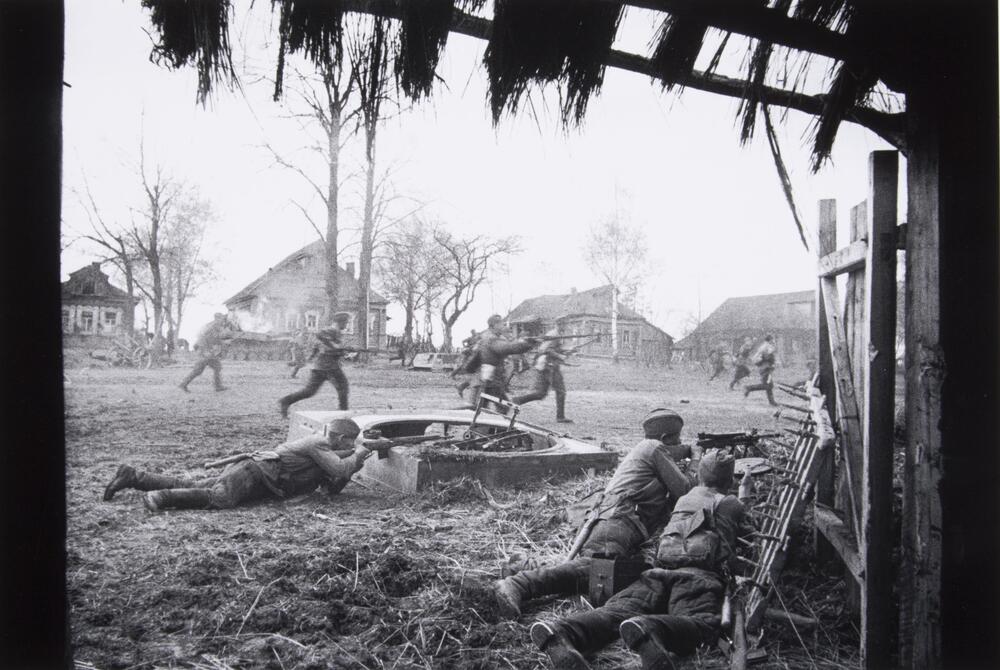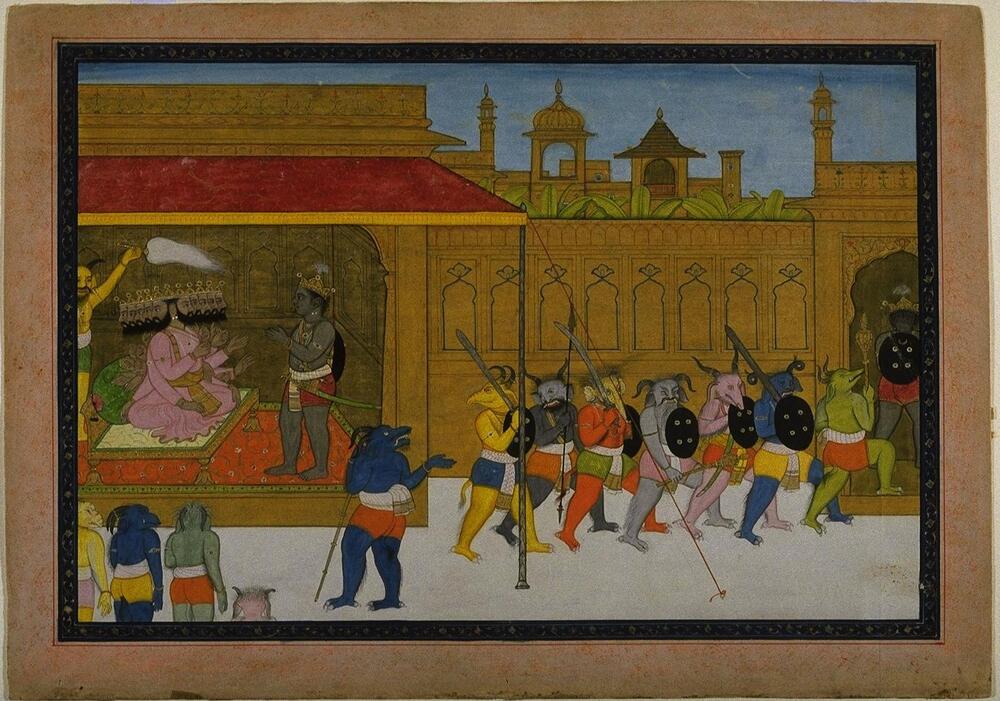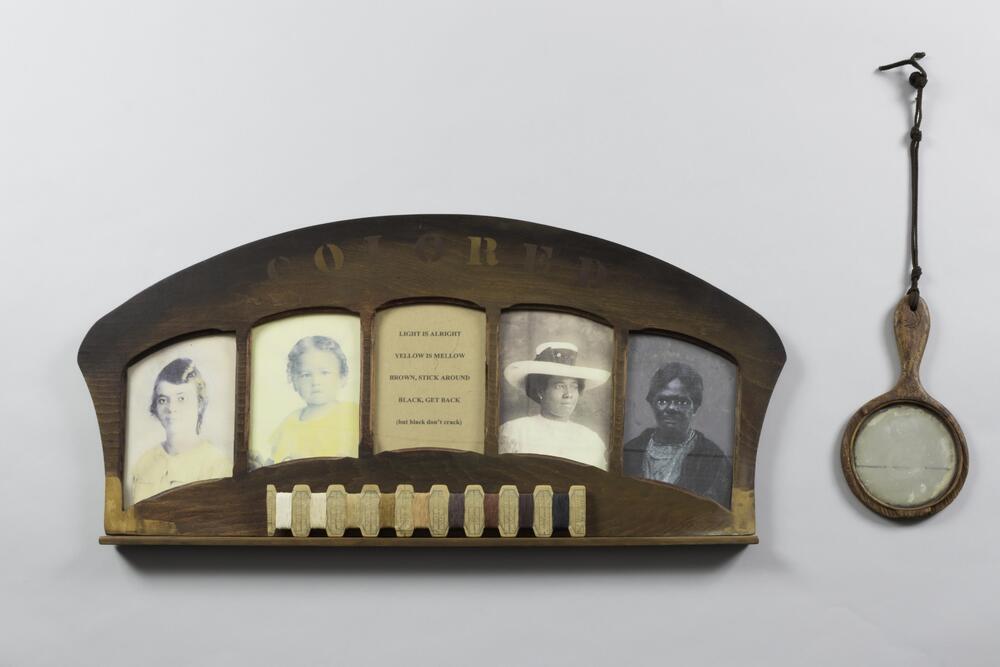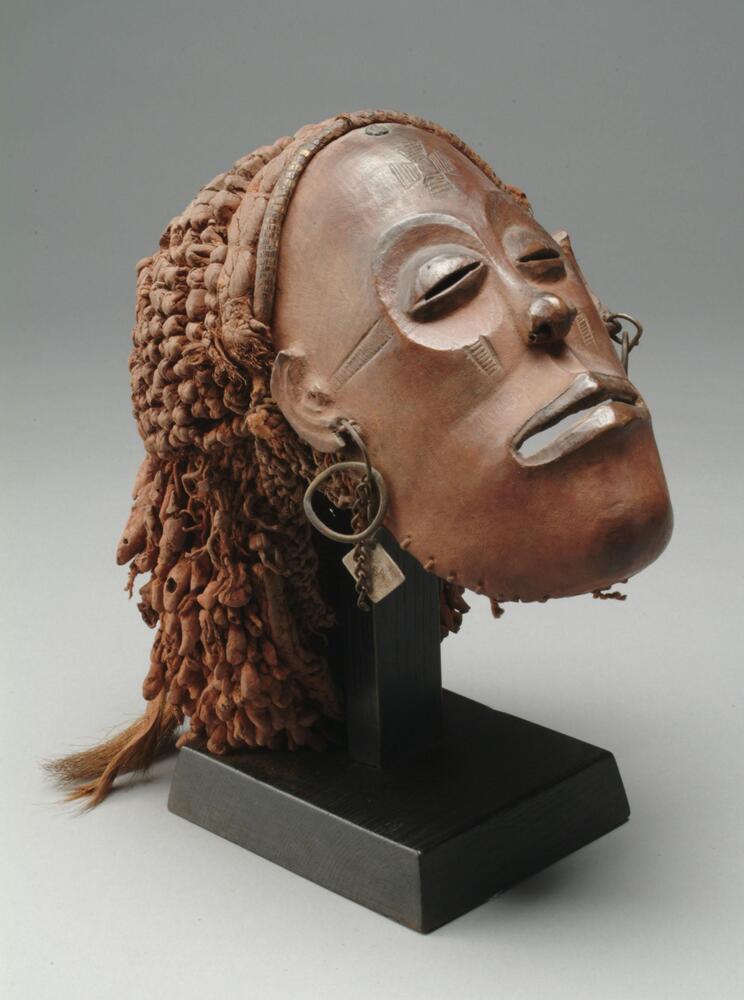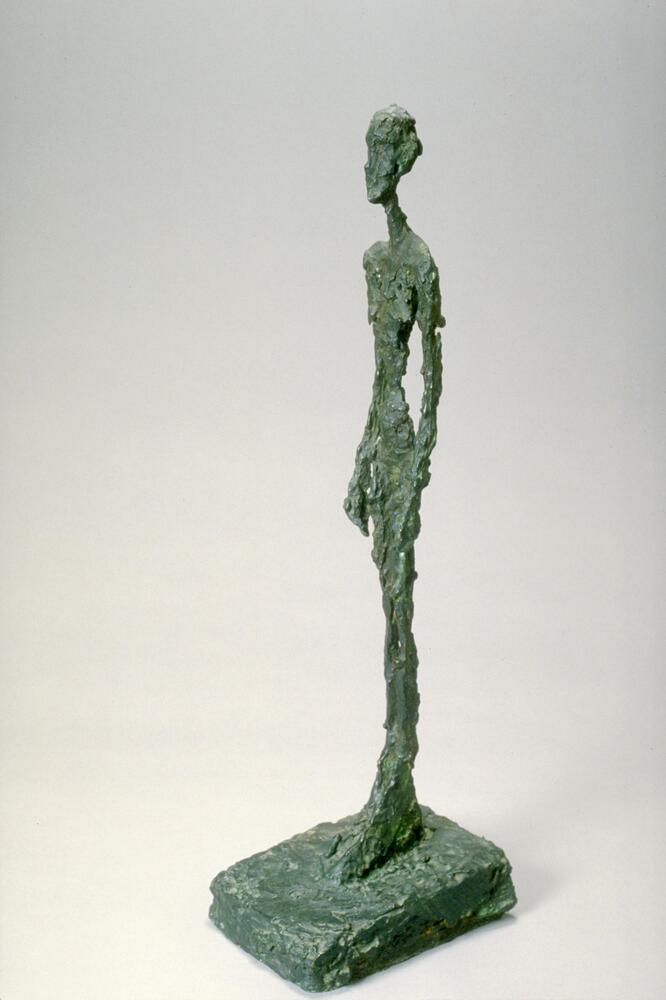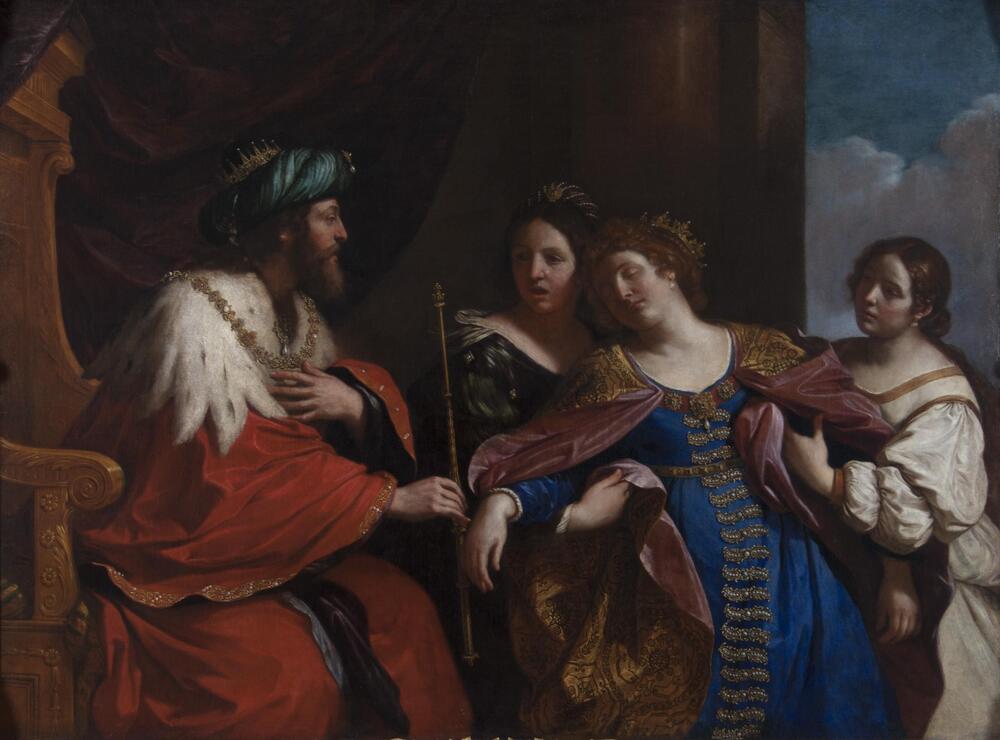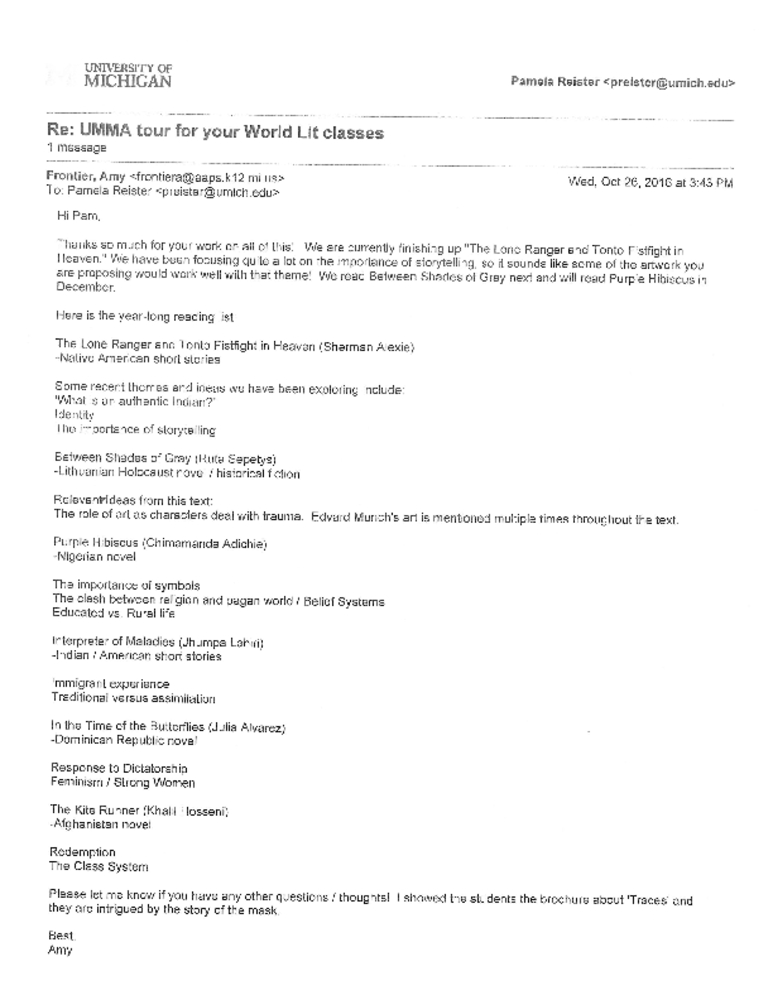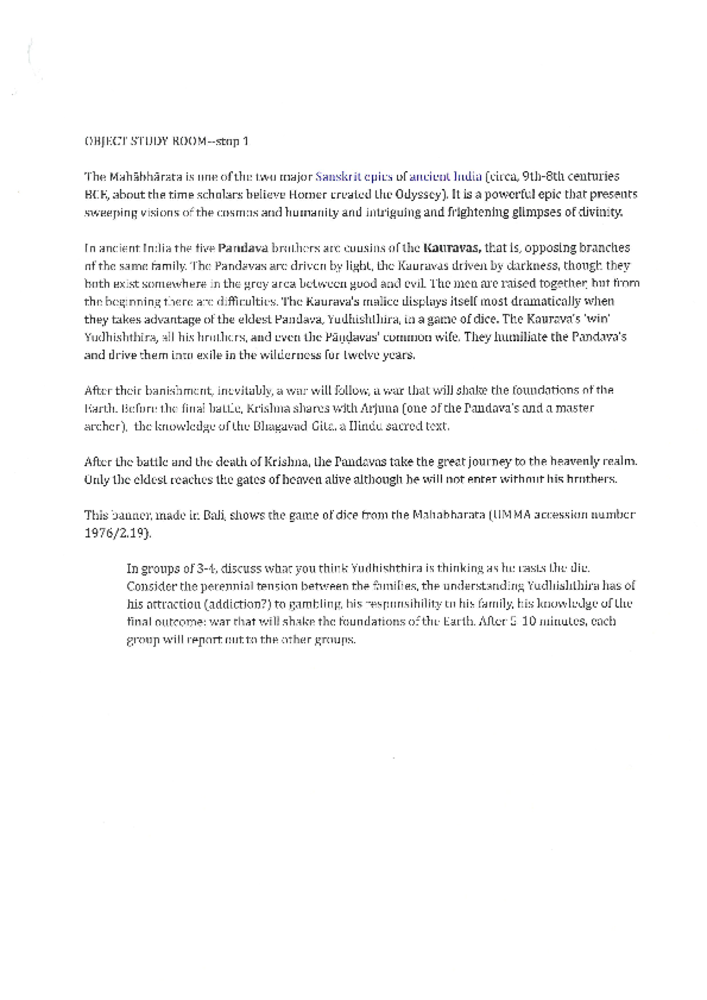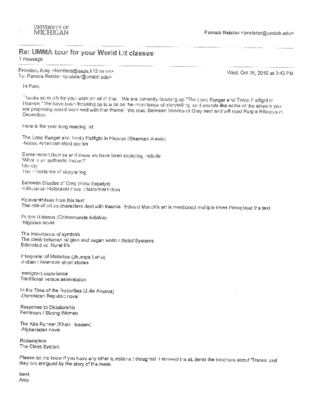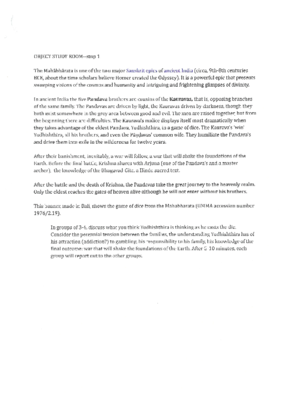High School: World Literature
Docent Curricular Tour
This tour arose through a connection with Pioneer High School's World Literature course. The following stops loosely correlate with the reading list and the related themes. See the attached document for extended background on the novels and art.
Activity in Print Study Room: Heroism, Military Conflict, and Epics (PDF attached)
Images: Dmitri Baltermants, Battle for Kamenka Village,
The Death of Dara, from the Shahlnama of Firdausi
Ramayana manuscript: Demon Armies Pour Out of Ravana's Castle
Divide into small groups of about 6 students. Each group will reflect on one image and discuss how conflict is presented. What is its nature or personality? Then discuss the function of that type of representation for the type of publication in which it appears. Additional discussion topics: 1) how hero is depicted, 2) what are characteristics of valor and honor? How do poets and artists take on this responsibility to communicate these values?
Note: Betye Saar's Colored was also hanging in the room, and students were interested in discussing it.
Activity in Object Study Room: (PDF attached)
Image: Banner from Bali, from the Mahabharata
See attached PDF for background on the Mahabharata.
In groups of 3-4, discuss what you think Yudhishthira is thinking as he casts the die. Consider the perennial tension between the families, the understanding Yudhishthira has of his attraction (addiction?) to gambling, his responsibility to his family, his knowledge of the final outcome: war that will shake the foundations of the earth. After 5-10 minutes, share with the large group.
Activity in Lower Level Cases (PDF attached)
Look at these two photographs (large portraits) or the Tyree Guyton paining of the two faces for a minute. Select one to focus on for this stop. Look at your selected image. What emotion comes to mind when you look at this person? Name the emotion in the space below. Write details you see in the portrait that might be evidence of this emotion. for example: fear = stiff posture, shifting eyes, pinched mouth, pale skin; sadness = mouth turned down, shadows, slumped or sagging shoulders.
After you have identified an emotion related to this portrait, take time to free write about this person. Don't worry if it doesn't connect exactly to what you know about the image. Make new connections! Consider one of the following points of view.
1. Third person, outside the frame. What does she/he feel given what you know?
2. Third person omniscient, outside the frame,
3. Third person, involved in narrative process. Write about the activity of studying the face.
4. First person, inside the frame "I feel like"
5. Interview with the sitter. What are you looking at? Looking for? Why are you . . .?
Reading List and Possible Stops:
1. The Lone Ranger and Tonto Fistfight in Heaven, by Sherman Alexie (Native American short stories)
What is an authentic Indian?
Identity
Importance of story telling
Possible stop: Esther, storytelling and identity
2. Between Shades of Gray, by Ruta Sepetys (Lithuanian Holocaust novel)
Role of art as characters deal with trauma
Edvard Munch's art is mentioned many times in the text
Possible stop: Giacometti, holocaust
3. Purple Hibiscus, by Chimamanda Adichie (Nigerian novel)
Importance of symbol
Clash between religion and pagan world and belief systems
educated vs. rural life
Possible stop: Pwo mask / African gallery, highlight issues of colonialism and complexity of identity
4. Interpreter of Maladies, by Jhumpa Lahiri (Indian American short stories)
Immigrant experience
tradition vs. assimilation
Possible stop: Picart print: Indian artifacts and European interpretations of Indian culture
5. In the Time of Butterflies, by Julia Alvarez (Dominican Republic, novel)
Response to dictatorship
Feminism, strong female protagonist
Possible stop: Esther, strong women
6. The Kite Runner, by Khalil Hosseini (Afghanistan, novel)
Redemption
Caste / Class system
Part of 1 Learning Collection
<p>Docent Curricular Tour</p>
Rate this Resource
AVG: 0 | Ratings: 0
& Author Notes
Creative Commons by-nc-saLast Updated
May 25, 2017 11:42 a.m.Report
Reporting Policy

